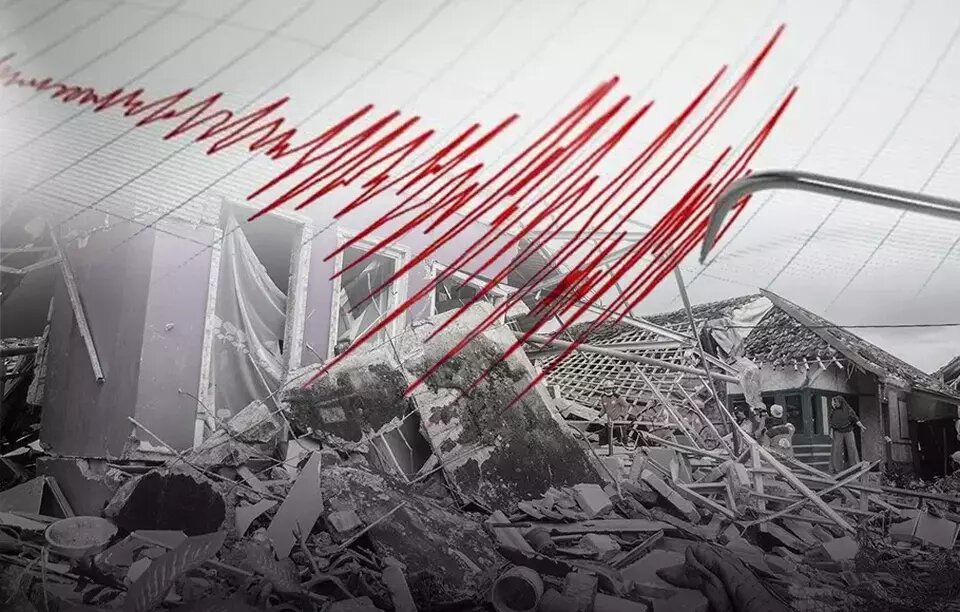Powerful 6.2-Magnitude Earthquake Strikes Aceh, Indonesia: What You Need to Know
The recent earthquake that struck Aceh has captured the attention of residents and authorities alike. Occurring at 6:03 p.m. local time, this seismic event was centered in the southern region of Aceh, approximately 36 kilometers southwest of Aceh Selatan. The tremor, measured at a depth of 29 kilometers beneath the Earth’s surface, has raised concerns among the local population and has been reported by Jakarta Globe.
According to the Meteorology, Climatology, and Geophysics Agency (BMKG), the earthquake’s epicenter was pinpointed at coordinates 3.15°N latitude and 96.95°E longitude. In light of this seismic activity, the agency has urged residents to remain calm and vigilant for any potential aftershocks. Fortunately, the earthquake did not trigger a tsunami threat; however, authorities are maintaining a close watch on the situation to ensure public safety.
This seismic event has inevitably brought back memories of the devastating 2004 Indian Ocean tsunami, a tragedy that deeply affected Aceh and its neighboring regions. The catastrophic tsunami was set in motion by a 9.1-magnitude earthquake off the coast of Sumatra, leading to the loss of over 170,000 lives in Indonesia alone and displacing millions across several countries.
Key Details of the Recent Earthquake
- Time of Occurrence: 6:03 p.m. local time
- Location: Southern Aceh, 36 kilometers southwest of Aceh Selatan
- Depth: 29 kilometers beneath the Earth’s surface
- Epicenter Coordinates: 3.15°N latitude, 96.95°E longitude
- Tsunami Threat: No threat reported
The BMKG has provided crucial information regarding the aftershocks, advising residents to stay alert and prepared. This recommendation is particularly significant given the region’s history with seismic activities. It is essential for communities to be aware of safety protocols and respond appropriately in case of further tremors.
Historical Context: The 2004 Indian Ocean Tsunami
The 2004 Indian Ocean tsunami is etched in the memory of many, serving as a stark reminder of nature’s power and unpredictability. This tragic event was the result of one of the most powerful earthquakes ever recorded, with a magnitude of 9.1. The repercussions were felt far beyond Indonesia, affecting multiple countries around the Indian Ocean.
- Death Toll: Over 170,000 people in Indonesia
- Displacement: Millions affected across several countries
- Long-term Impact: Lasting effects on the economy and infrastructure in affected regions
In the wake of the recent earthquake, it is crucial for both authorities and residents to remain informed and proactive. Community engagement, education on earthquake preparedness, and timely dissemination of information can significantly reduce the risks associated with seismic activities.
Safety Measures and Preparedness
Residents are encouraged to adopt safety measures to protect themselves and their families during earthquakes. Here are some important tips:
- Stay Informed: Keep track of updates from BMKG and local authorities regarding seismic activity.
- Have an Emergency Plan: Create a family emergency plan that includes evacuation routes and meeting points.
- Prepare an Emergency Kit: Stock essential supplies such as water, food, medications, and first-aid items.
- Secure Your Home: Fasten heavy furniture and appliances to walls to prevent tipping during an earthquake.
- Practice Drills: Regularly conduct earthquake drills with your family to ensure everyone knows what to do.
As the situation evolves, the focus remains on community safety and preparedness. The recent earthquake serves as a reminder of the need for vigilance and readiness in the face of natural disasters. By staying informed and prepared, residents of Aceh and surrounding regions can better navigate the uncertainties that come with living in a seismically active area.
In conclusion, while the recent earthquake did not pose a tsunami threat, the memories of past tragedies like the 2004 tsunami remind us of the importance of remaining prepared and informed. Local authorities, along with the community, must work together to ensure safety and resilience in the face of such natural events.






